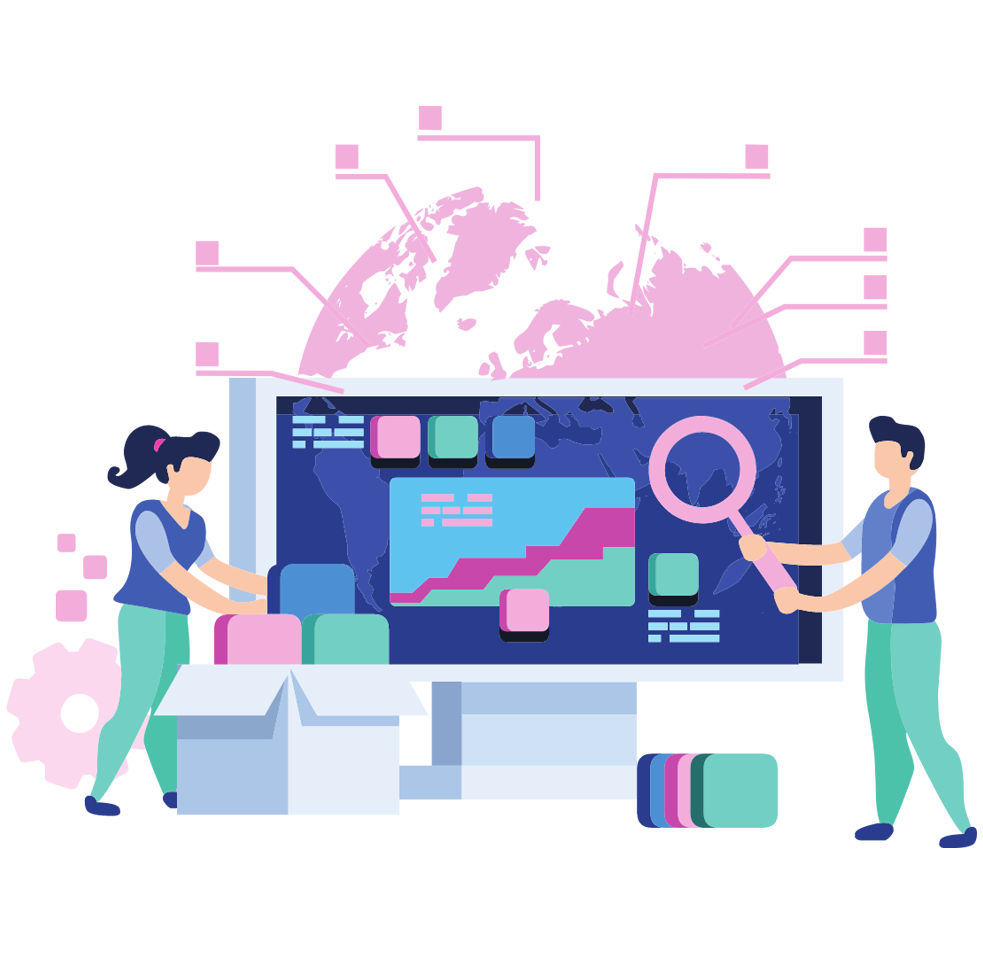According to one of the latest GUS researches, there are more than 72 000 non-financial companies registered in Poland. No matter their size, location or products they sell, all their actions revolve around the customers since they are the ones driving revenues and allowing business to grow. Needless to say – building a stable, long-lasting relationship with a customer is essential when it comes to any marketing activities. Customer segmentation is a great way to really get to know your target group.
Just imagine the expectations of a CEO that sees an impressive five million customer database, spends a lot of money on advertising, has a good product portfolio and hires specialists for email marketing or social media coverage. Then he almost has a stroke seeing financial reports! He cannot understand why – despite of various marketing activities – it didn’t yield the expected results, and half of the potential buyers didn’t make any purchase.
In our everyday work we observe that many times such powerful database does not convert as expected, because of a lack of understanding of what drives customers to make their buying decisions. The key resides in a proper customer segmentation and targeting of different audiences with the right message.
What should we have in mind when starting our divide-and-conquer process for the customer database? Let us guide you through the most common customer segmentation challenges, and show you the ways to overcome them.
Challenge 1: understanding the “why”
Before you deep dive into various customer segmentation techniques and start creating complex segments, the biggest challenge will be to actually understand the reason you want to do this at all – your “why”.
Based on our experience, we can provide you with a list of different customer segmentation drivers, some of which are:
- correct budget allocation into marketing and selling activities that generate the highest revenues;
- identifying customers that are more willing to buy a product than the others;
- increasing customer satisfaction and boosting “member gets member” schemes;
- finding a profitable niche or fighting the competitors.
Each “why” will result in different segments setup and different variables used for filtering.
When you’ve identified three or four reasons why you want to move from “let’s send this newsletter to all of them” to “let’s show group X offer A, and group Y offer B”, you can rely on different kind of factors to find your sweet spot. These factors can be divided into four groups: demographic, geographic, behavioral and psychographic.
Let’s take a closer look at these groups:
Demographic segmentation can show you how your customers differ when it comes to their gender, age, education and socioeconomic status. You would probably show different advertisements to youngsters from junior high and different to successful entrepreneurs in their 30s.
Geographic segmentation relies on location, districts and proximity to chosen places. If you see that a skate shop located next to a stadium gets a lot of customers, you are more likely to open another one next to an outdoor sporting venue rather than a cinema.
Behavioural segmentation can tell you more about the consumption habits of the customers and the way they use and interact with your product. If your customers are always going with the cheaper option, there’s no point in offering them a premium product.
Last but not least, you can segment your database according to psychographic data – meaning you segment customers on the basis of lifestyle, beliefs and personality. If you’re running a webshop with make-up products and see a strong group of activists that prefer natural ingredients over chemicals, you would position organic & natural products on a hero carousel on your landing page.
Challenge 2: customer segmentation in the context of marketing channels
Okay, you’ve chosen a mix of characteristics and created your first segments, so now activate, send, display, push! Wait, are you sure you’ve analyzed everything? What we’ve observed is that some companies put a great effort in choosing the right audience, but they don’t spend enough time to match it with the appropriate marketing channel.
Even if you didn’t take age into consideration in the initial list of segments, it would be beneficial to see age distribution in your database. Why? Because every generation has its preferred channels – more senior customer would choose Facebook, while younger people will be more willing to buy from brands that advertise on Instagram or Snapchat.
Or put it differently – let’s suppose you are running a car rental company. It is more likely that a customer who has just made a booking, waits only for an email from a rental agent with all the details related to car pick-up, insurance and refueling policy. There’s no reason to target such person with a bunch of marketing emails, because he won’t open them anyway. In this case, for some cross- or up-sell opportunities, using other channels may increase your chances of success.
Challenge 3: correct identification of one-time buyers
You’ve probably heard it a lot of times – you should differentiate one-time buyers from regular customers. This it definitely correct, but you need to understand what exactly stands behind a single purchase. Imagine a sport club that is having the last game of the season.
Let’s say that John has recently registered and bought only one ticket for the final match of the season. That doesn’t mean he’s a one-time buyer – he simply didn’t have time to make another purchase. Therefore, he should be considered rather as a recent buyer than a one-time buyer.
On the other hand, if you look back at your data, deep dive into previous seasons, and see Anna – who last bought tickets three years ago and didn’t engage with the team ever since – you may qualify her as a one-time buyer. The bottom line is that John and Anna should be treated differently. Even if your database shows only a single purchase for both of them.
Challenge 4: going beyond transactional data
So far we’ve covered cases where historical and transactional data play an important role in segments definition. While demographics and purchase history are definitely a good start to investigate the segments and potential pockets of growth, they do not fully answer the question: why the customer buys a certain product or chooses a particular brand. Of course, if your client is buying dresses frequently, it would definitely make sense to send her a discount code!
But ultimately, it’s not only design and price that matters. Perhaps the mentioned client cares about the environment, so she buys a dress that is made of 100% cotton. Or maybe she is an ambassador of sustainable growth and the company’s philosophy is consistent with hers? Maybe the label “Made in Poland” persuades her to choose this particular brand because she wants to support local producers, or she is buying from this seller because he donates 5% of his profits to charity? The point is, the fact that your customer bought three dresses last year, doesn’t mean that she will repeat the purchase this season.

Challenge 5: keeping segments up-to-date
Segments are like us – they grow and evolve over time, and should be updated frequently. Events, important calendar dates and seasons impact the look of our segments, too. If those segments are not revisited and rebuilt on a regular basis, they may give us false results.
Let’s assume that your client is going to a Halloween party. She buys makeup products in vibrant colors that are meant for people who like to wear strong makeup. A few months later, the same Patrycja goes to an elegant dinner. On this occasion he will use a different set of products – this time in subdued colors.
If in your database Patrycja will be in the segment “likes expressive colors”, the marketing message will not be hit if the client now needs something completely different.
Suppose it’s one week before Halloween and one your clients buy some makeup products that have vivid colors and are made for girls who like wearing heavy makeup. Couple of months later, on Valentines day, the same woman is going to an elegant dinner. She would definitely use different set of products on that occasion. So, if you segment her as “likes expressive colors”, and don’t update her status to “prefers soft makeup”, the marketing message would not work. Now she needs something completely different than a few months ago.
Segment refreshing can help you understand whether your strategy brought expected results. Segments shrinking or growing will show you, how people reacted to the product. Have their buying habits changed? Are still with your brand or have chosen a different one? Taking a look at the segments counts changing over time will help you measure performance, so that you can either apply similar actions to other segments, or choose a different strategy and make adjustments to future campaigns.
Think big, start simple
We have just described five common challenges that companies are facing when they start segmenting their customers. This list could be extended at least three times. Working with data can lead you to various paths and each path has its own challenges. Remember that you don’t have to start with a very complex customer segmentation and know everything about your customer. That way you wouldn’t be able to say what exactly made him convert.
If you’re unable to explain in a few words what your segment is about, it means it’s too complicated. When you think of your strategy, think big, but start simple! If you haven’t segmented your customers yet, start with the set of demographic and transactional data. As soon as you see some patterns, try adding more and more. Include the time factor and ensure that marketing channels are the right ones for your target groups.
In the next phase go beyond that! Run a qualitative search, use social listening and satisfaction surveys to understand the mindset of your customers. Couple of months later, you can introduce some smart segments fueled by AI, but don’t over complicate the first step.
If you want to learn more about how we use customer segmentation in our projects, and how we overcome challenges with Salesforce marketing automation tools and Einstein predictions, be sure to contact us. We would be more than happy to hear from you!
Article written by Justyna Bołtryk








































